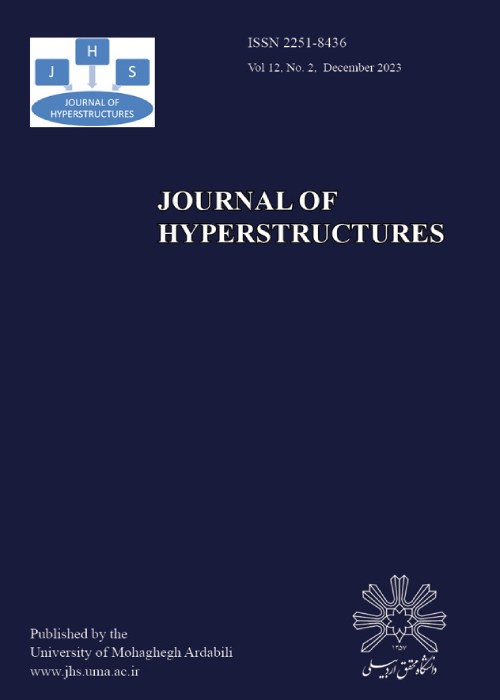فهرست مطالب
Journal of Hyperstructures
Volume:9 Issue: 1, Winter and Spring 2020
- تاریخ انتشار: 1399/12/25
- تعداد عناوین: 5
-
Pages 1-10
Abstract. The purpose of this study was to compare a neural network with the path analysis in fitting regression models. The conceptual model of path analysis according to the studied data includes a dependent variable, two independent variables and one mediating variable. The neural network conceptual model is considered with three layers (input, hidden, output) and the hidden layers have two nodes. The study asked 474 people about their education, beginning salary, previous experience and their current salaries. The data divided into the train and test groups at the rate of %60 and %40. The criterion for comparing the two methods is RMSE. The results of the analysis showed that both models are over fitted and the RMSE train and test of neural network are less different from the path analysis. Therefore, in this dataset, it can be said that the neural network performs better than the path analysis.
Keywords: Neural network, Path analysis, Regression, RMSE -
Pages 11-17
In this paper, a new distribution called the exponentiated discrete inverse Rayleigh distribution is introduced, which is an extension of the discrete inverse Rayleigh distribution. This new discrete distribution is a discrete analogue of the continuous exponentiated inverse Rayleigh distribution. In this paper, we discuss the shapes of probability mass and hazard rate functions, the moments of the new distribution and data generation. The maximum likelihood estimation of the parameters is also studied. Finally, an example is given to demonstrate an application of the new distribution.
Keywords: Maximum likelihood estimation, Hazard rate function, Discrete inverse Rayleighdistribution, Moment -
Pages 18-34
The purpose of this study is to investigate the connection between probabilistic and modular metric spaces. We discuss several important properties such as convergence and completeness, etc, and the relationship among the mentioned properties in the probabilistic metric and modular metric spaces. Also corresponding examples of probabilistic metric space obtained by a metric space is extended to modular metric spaces.
Keywords: Probabilistic metric space, Modular metric space, Luxemburg metric -
Pages 35-48
So far, many scrambles have been introduced to break the correlation between Halton’s sequence points and improve its two-dimensional designs. In this paper, some of the most important scrambles that are available to scrambling the Halton sequence are evaluated, and describe their weaknesses. Also, we introduce a new method that, despite it’s simplicity of execution, has good twodimensional designs.
Keywords: Halton sequence, Scrambling, Discrepancy, Weyl sequence, Continued fraction -
Pages 49-61
This paper presents a new powerful iterative method for solving large and sparse linear systems. Using the idea of the Jaya method to the restarted generalized minimum residual (GMRES) method, we propose the Jaya-GMRES method. The JayaGMRES is an efficient solver, being based mainly on matrix-vector multiplications. Numerical results show that the Jaya-GMRES method has found more accurate solutions and converges much regular than the GMRES method.
Keywords: GMRES method, Jaya optimization algorithm, Linear systems, Iterativemethod, Non-symmetric matrix


